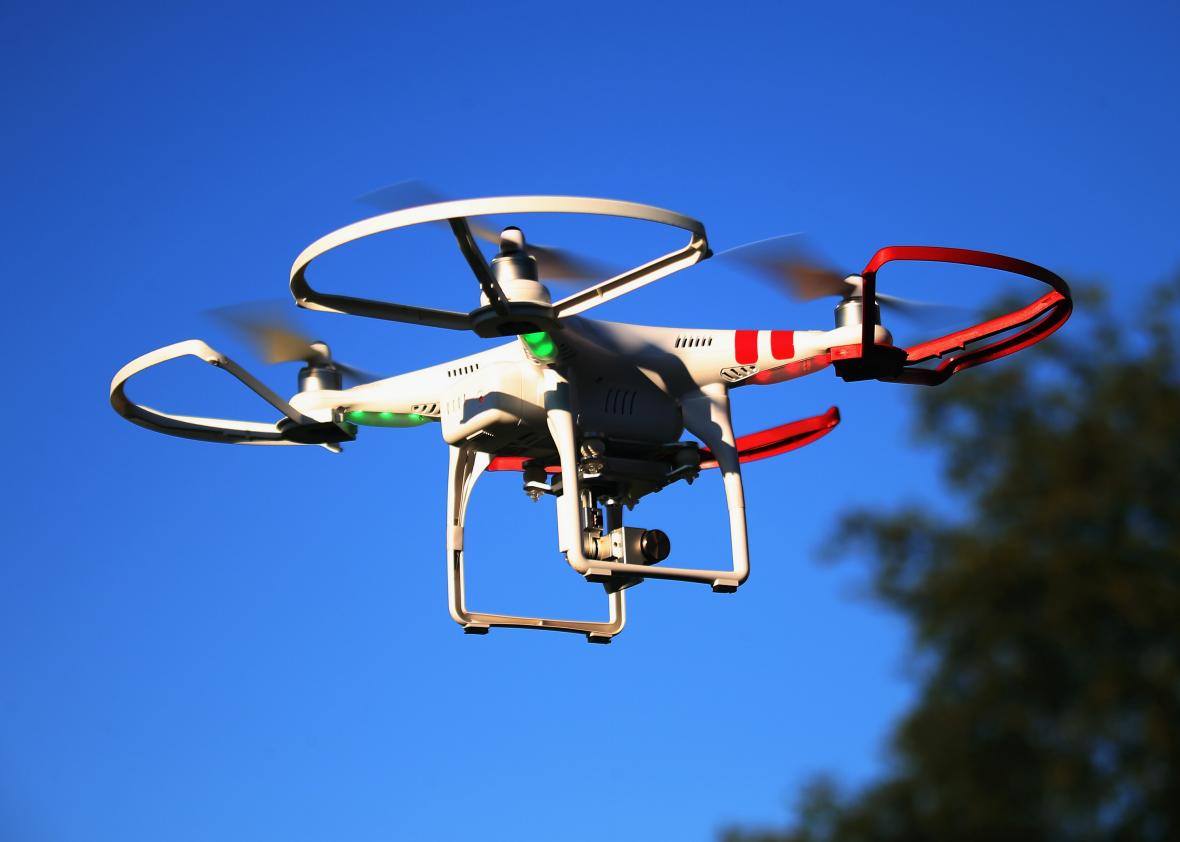Drone Crash Injures 11-Month-Old Baby During Princess Bride Screening

Photo by Bruce Bennett/Getty Images
On Sept. 12, an errant DJI Inspire 1 drone dropped from the skies and crashed to the ground during a public screening of The Princess Bride in Pasadena, California. The ensuing debris hit an 11-month-old girl in the head, and though the child escaped serious injury, the outcome could have been far worse. The incident was but the latest in a series of well-publicized drone crashes, and the Federal Aviation Administration, with good reason, is starting to become “concerned with the growing number of reports about unsafe [drone] operations,” an FAA representative told ArsTechnica. While my sense is that the vast majority of drones are used safely and responsibly, whenever one isn’t, the incident seems to make the news—and that’s a big problem. Drones will never transform the American economy in the way that industry boosters predict as long as they’re primarily known for falling from the sky and hitting infants on the head.
The FAA has announced that it will investigate the Pasadena incident. But I can already predict what its investigation will probably find. When a drone veers off course and fails midflight, operator error is often to blame. The FAA does not require hobbyists to obtain a pilot’s license or take a safety class before launching a drone. This regulatory lacuna means that many novice flyers are content to learn by doing, which is alarming if what you’re doing is operating a tiny helicopter that could fall and hit you on the head. Take this Gizmodo post from last year, which features a video of a man realizing that his drone’s battery is about to die midflight and frantically trying to save it before it falls into a lake. Most drone systems go out of their way to notify the user when their batteries are running low—but all the notifications in the world are useless if the user isn’t paying attention. Sometimes the user error isn’t as obvious as ignoring a flashing “Low Battery” signal. Drones are delicate instruments, and neglecting to keep them clean and well-maintained can increase the risk of component failure.
Anecdotal evidence indicates that many drone hobbyists are blissfully unaware of basic flight safety protocols or of their drones’ operational limitations. For example: The commercial drones used by hobbyists aren’t like military drones, whose operators can be halfway around the world from the drone itself. The website for the DJI Inspire 1 drone says that the device’s remote controller has a range of 2 kilometers, assuming unobstructed outdoor operations. What this means is that it’s very important to keep your drone within your field of vision at all times; when a drone goes out of sight, it might also go out of range. A city cop told the Pasadena Star-News that the drone operator in the Princess Bride incident lost visual contact with his DJI Inspire 1 drone and that the drone subsequently lost its signal.
But the blame doesn’t always redound to operator error. The lawyer for the high school science teacher accused of sending a drone careening into a U.S. Open tennis match earlier this month has claimed that his client’s drone “went haywire,” and he might well be telling the truth. Drone-enthusiast forums are filled with stories of random flyaways, with the devices crashing or disappearing through no apparent fault of the operator, and users speculate on problems ranging from software/firmware failures to GPS glitches. “My bebop flew away itself already 2 times for two weeks,” one sad poster wrote of his Parrot Bebop drone in March 2015. “Unfortunately i realize i will lose bebop soon it's just a matter of time.”
If the FAA really wants to minimize unsafe drone operations, it needs to devise a framework for accountability that involves dronemakers and operators alike. Just as a drone hobbyist should be penalized for reckless flying, manufacturers must be discouraged from marketing devices that tend to go haywire. As the agency considers this issue, it shouldn’t limit its solutions to punitive measures, either—but whatever it does, it needs to act pretty soon.
This article is part of a Future Tense series on the future of drones and is part of a larger project, supported by a grant from Omidyar Network and Humanity United, that includes a drone primer from New America.
Future Tense is a partnership of Slate, New America, and Arizona State University.


